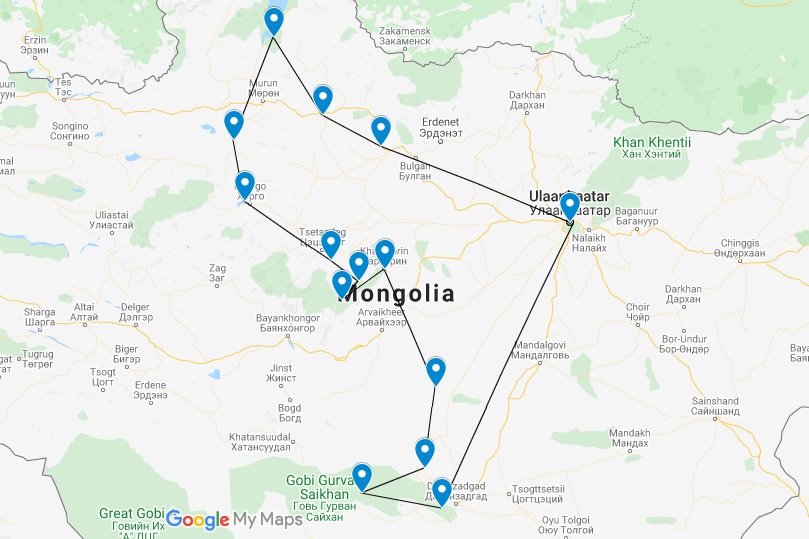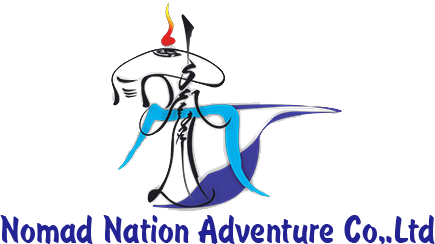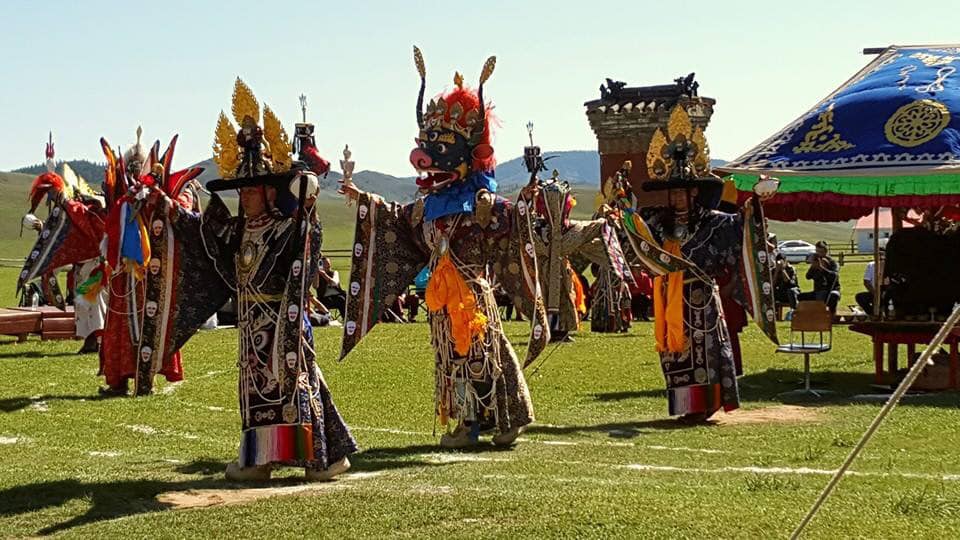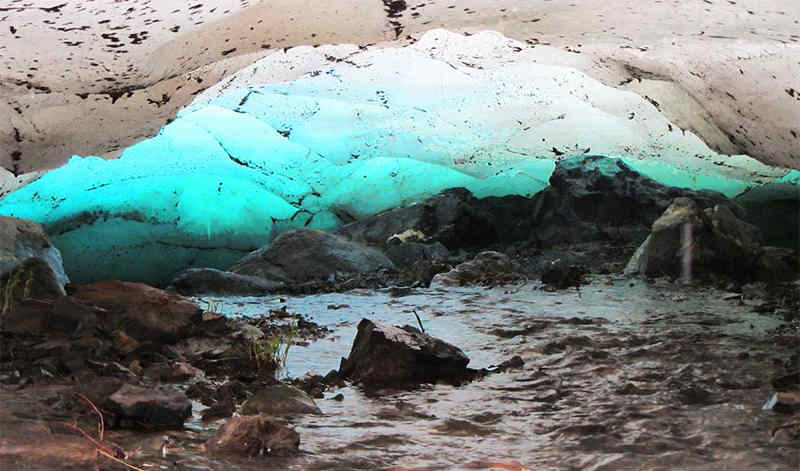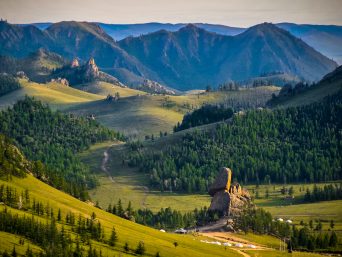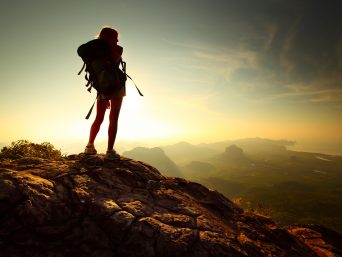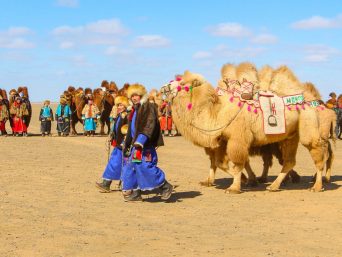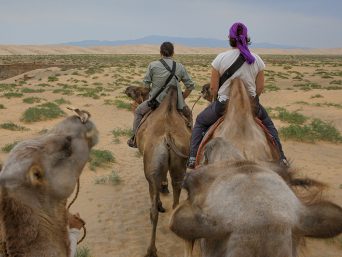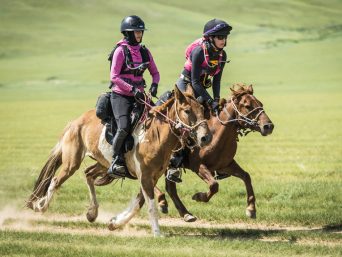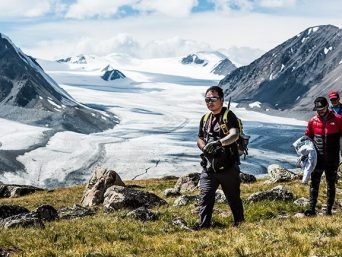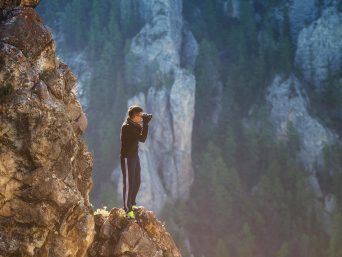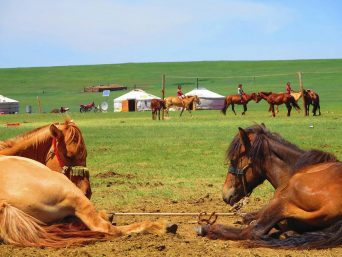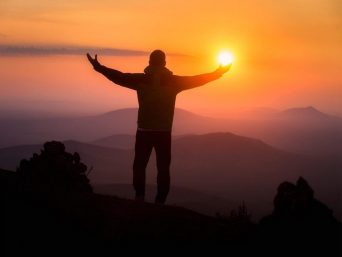Quite possible to modify this program according to your wishes!!!
Day – 1 : Ulan Bator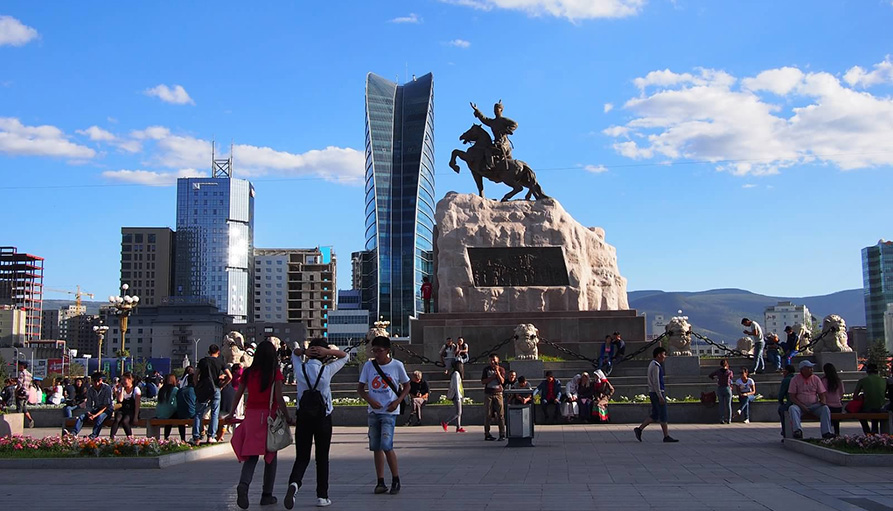
Arrival at Ulan Bator and transfer to your hotel for a warm shower and a moment to relax after this long flight.
Afternoon, visit of Gandantegchinlin Monastery. Built in 1809, the Gandantegchinlin Monastery – formerly known as the Gandan Monastery – is a Tibetan-style Buddhist monastery located in Ulan Bator. Its name of Tibetan origin can be translated as “Great site full of Joy”.Several hundred monks currently reside there.
It contains a statue of Megjid-Janraiseg (Bodhisattva Avalokiteshvara – called Chenrezig in Tibetan) by 25 meters high.
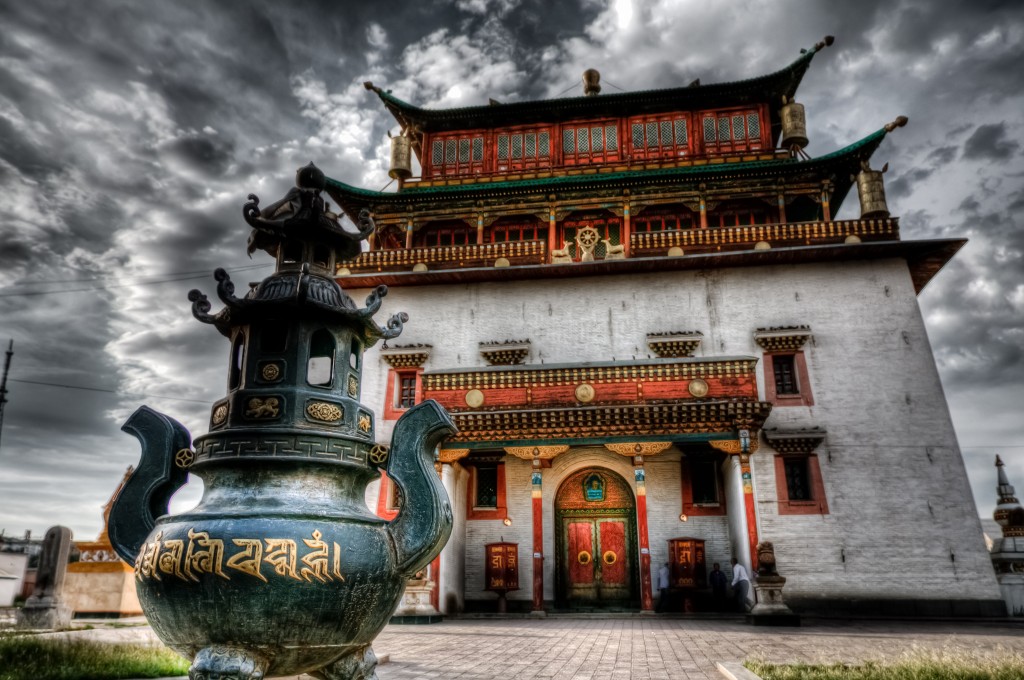 The original statue, made of copper, was erected in 1911 and was dismantled in 1937 by Soviet troops (the remains of the statue were subsequently used to make bullets during the siege of Leningrad). Following the fall of communist regimes, it was rebuilt in 1996 with donations of gold from Nepal and Japan.
The original statue, made of copper, was erected in 1911 and was dismantled in 1937 by Soviet troops (the remains of the statue were subsequently used to make bullets during the siege of Leningrad). Following the fall of communist regimes, it was rebuilt in 1996 with donations of gold from Nepal and Japan.
Adorned with gold and nearly 2,286 precious stones, the statue weighs over 20 tons and is covered with nearly 100 kg of silk clothing.
Visit of the National Museum of Mongolian History. The National Museum of Mongolian History tells the story of the country, from prehistoric times to today. In this museum there is also an ethnographic section with costumes and jewels from various ethnic groups of countries: Kazakhstan, Buriats, Clzemchins…
Dinner and overnight at the hotel.
Day – 2 : Ulan Bator to Amarbayasgalant Monastery (320 km – 4 to 6 hours drive)
Breakfast and departure for Amarbayasgalant Monastery (6 to 7-hour drive, depending on the condition of the road). Picnic lunch en route.
Visit Amarbayasgalant Monastery.
Located in the enchanting and unspoilt chain of Bürengiyn Nuruu (Buren Khan), the Amarbayasgalant monastery is aptly named the “Monastery of the calm bliss.”
Indeed, the natural environment of this very important monastery had to be conducive to harmony and serenity, and the beauty is still intact today, thanks to its magnificent isolation, and the lack of paved roads to join the monastery.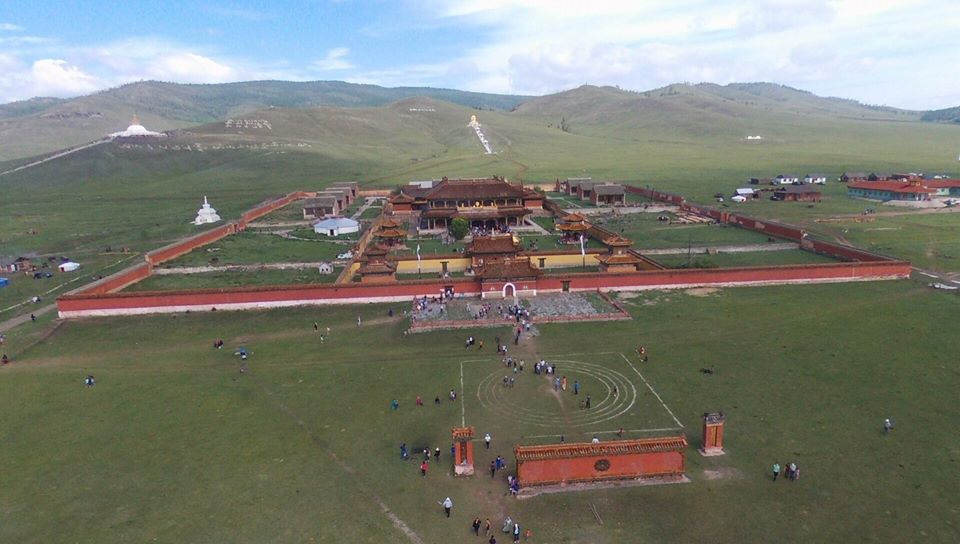
To reach it, you have to drive through several valleys on 35 km of sometimes difficult tracks. The valley where it is nestled has been carved by a tributary of the Orkhon River, and is crowned by Mount Budlan Uul (1567 m). The Monastery is at the foot of Toylvïn Davaa Pass (1226 m).
The Amarbayasgalant monastery is one of the three largest Buddhist centers in Mongolia. It belongs to the Tibetan Gelugpa school, also called “Yellow Hat school”. It was built in the early 18th century to house the remains of Zanabazar, the first Bogd Gegen and is one of the few monasteries to have escaped the destructions of the communist period.
The monastery has remained remarkably preserved, even if the nature sometimes takes a little ease, with few weeds that colonize tiled roofs, which do add charm to the ancient buildings!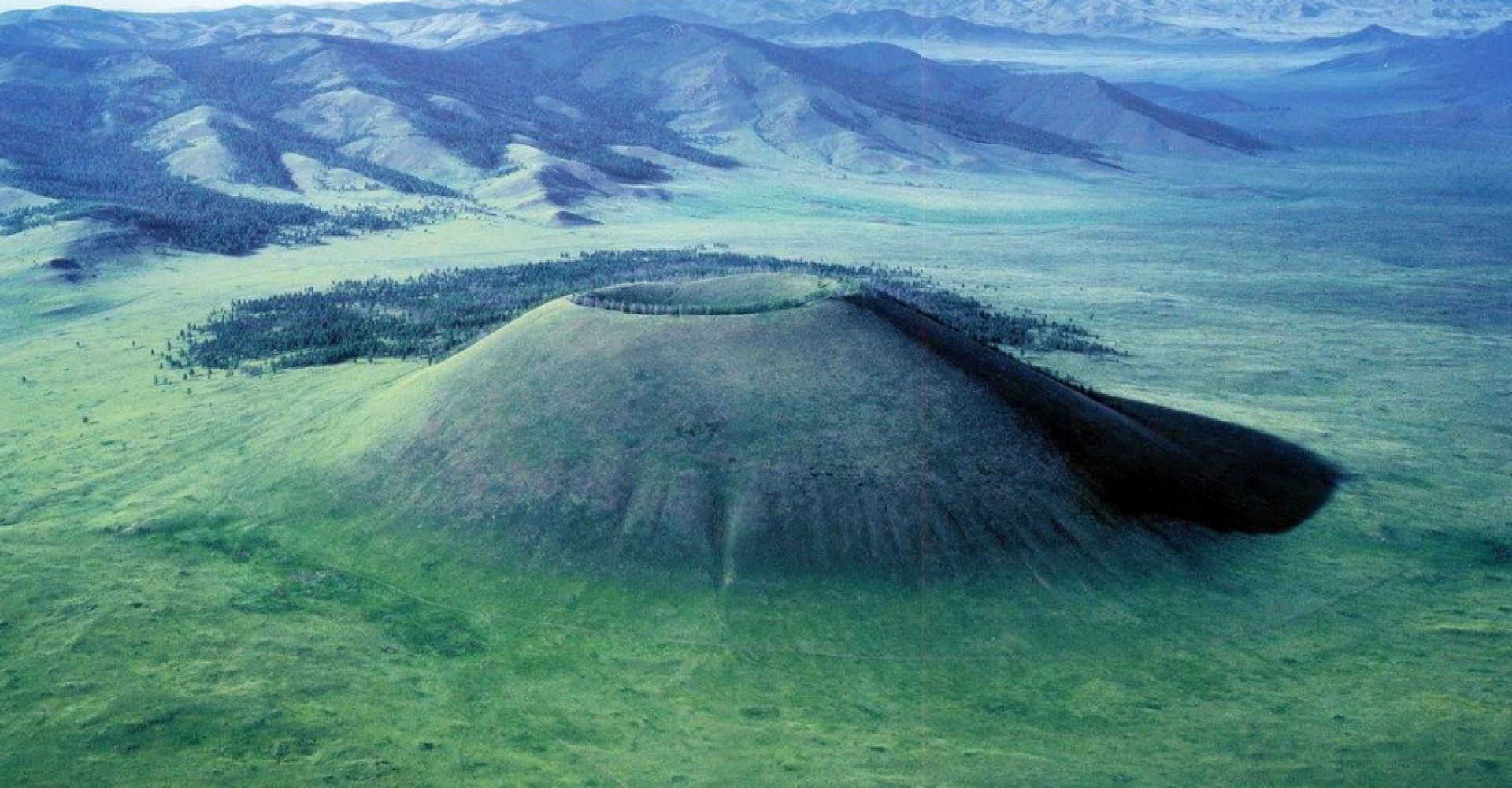
Amarbayasgalant‘s beauty also lies in its greater unity since all the buildings are Manchu style. The different temples are circled by red walls topped with glazed ceramic tiles.
On the hill overlooking the monastery, you can find a large statue and a stupa which reminds irresistibly that of Boudhanath in Kathmandu.
We set up camp in a valley near the monastery.
Dinner and overnight in tents.
Day – 3: Amarbayasgalant to Uran Togoo Tulga Uul (180 km – 3 to 4 hours drive)
After breakfast, we hit the road west to the “Natural Monument” Uran Togoo Tulga Uul, a nature reserve that protects the craters of two extinct volcanoes towering the surrounding steppes.
We set up camp in these huge open spaces, like a postcard from Mongolia …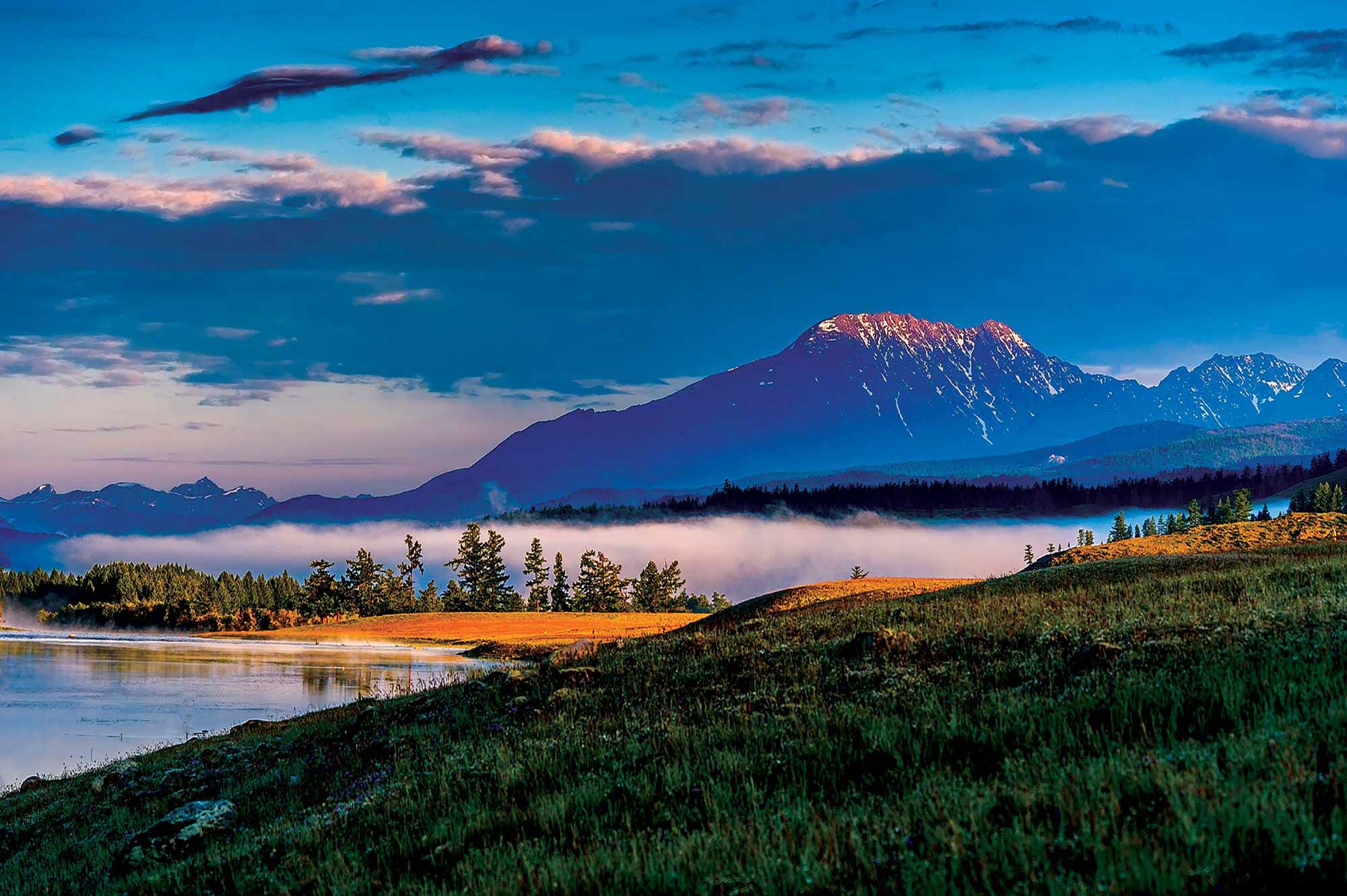
Short hike in this impressive scenery.
Dinner and overnight in tents
Day – 4 : Uran Togoo Tulga Uul to Ikh Uul (100 km – 2 to 3 hours drive)
After breakfast, we continue our journey to the northwest,
towards Lake Khövsgöl.
We visit the ruins of the ancient city of Baybalik, which was the capital of the Uyghur Khaganate 1200 years ago.
We set up our camp in a region called Ikh Uul.
Dinner and overnight in tents.
Day – 5: Ikh Uul to Lake Khövsgöl (Eastern side) (220 km – 3 to 5 hours drive)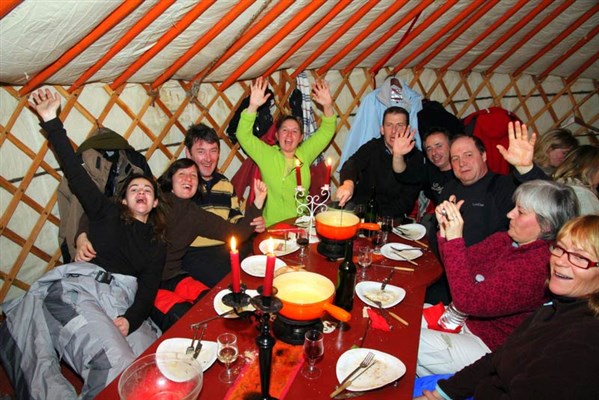
Transfer to the Yurt Camp at Lake Khovsgol.
Picnic lunch en route.
The Lake Khovsgol (Hövsgöl) is the second largest lake in Mongolia, and the deepest. It is located north of the country, in the vprovince of Hövsgöl. It is 136 km long and 36 km wide. Its waters are cold, frozen four months a year (January to April).
It represents 2% of global world freshwater supplies and the water is particularly pure.
The origin of Lake Khovsgol is very old, its age is estimated at several million years.
Located in a region prone to drought, this large lake is considered sacred by local people (especially Tsaatans, reindeer herders who live in remote areas of the region).
Ninety-six rivers flow into the lake, but only one comes out, the Egiin Gol River.
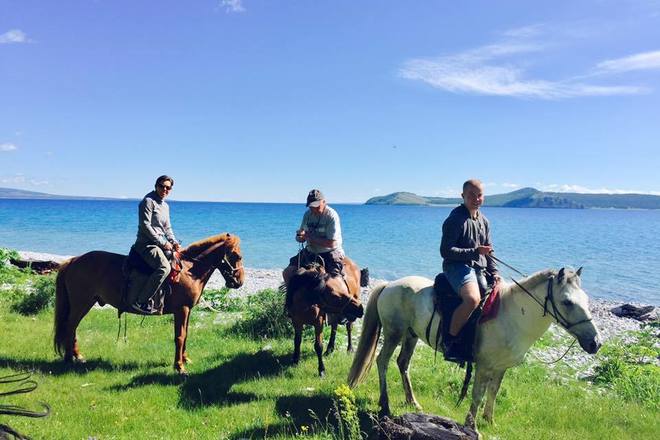 Many species of fish live there, as well as abundant wildlife in the surrounding area and a typical flora. The lake is also an important transit point for migratory birds from Siberia. The vast Hövsgöl National Park (838,000 hectares) was established in 1992 to protect this environment.
Many species of fish live there, as well as abundant wildlife in the surrounding area and a typical flora. The lake is also an important transit point for migratory birds from Siberia. The vast Hövsgöl National Park (838,000 hectares) was established in 1992 to protect this environment.
Dinner and overnight at the yurt (ger) camp on the lake shore (2-4 persons per yurt in single beds, shower and toilet in a separate building).
Day – 6: Lake Khovsgol to 2 days horseback ride with pack yaks (25km )
Breakfast at the yurt camp.
The next two days are devoted to a horse ride in the forests surrounding the Lake Khovsgol.
This ride is open to riders of all levels, even beginners.
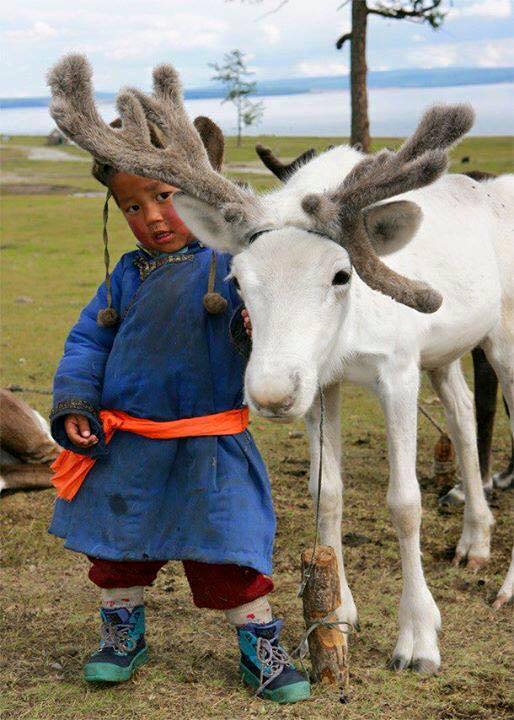 Yaks carry a yurt on carts. We assemble the yurt at the place where we set the camp. It will be used as a shelter for meals if needed.
Yaks carry a yurt on carts. We assemble the yurt at the place where we set the camp. It will be used as a shelter for meals if needed.
We also assemble the rest of the camp consisted of tents for 2 people.
Picnic lunch at our camp.
After a little rest, we can ride or hike to explore the surrounding area.
Dinner and overnight in the great outdoors at our camp
Day – 7: Lake Khovsgol – End of the horse ride and crossing to West side (25km)
Breakfast by the lake.
It is time to dismantle the camp and make our way back through the forests and hills, always with the blue reflections of the lake as a backdrop. We will visit a family of the Tsaatan ethnic group (reindeer breeders) before returning to the yurt camp.
Arrival at the yurt camp for lunch.
Afternoon relaxing by the lake.
Dinner and overnight at ger camp (2-4 people per yurt in individual beds, showers and toilets in a separate building)
Day – 8: Lake Khovsgol to Lake Dzuun Nuur (210 km – 3 to 5 hours drive)
Breakfast. We leave behind us the peaceful landscapes of Lake Khovsgol and drive to the south.
We cross the vast steppes dotted with mountains.
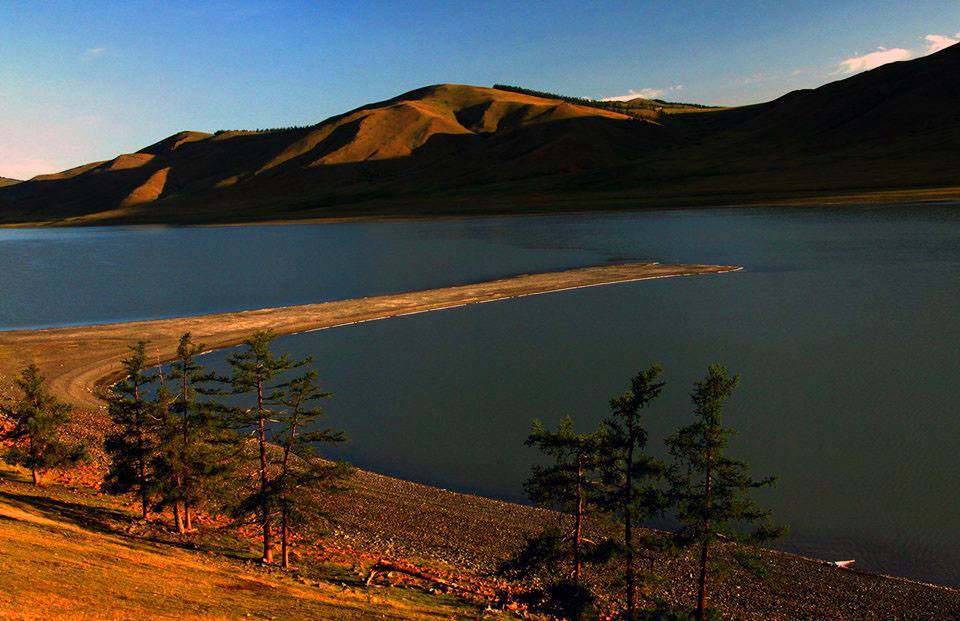 After the privacy of our camp on the shores of Lake Khovsgol , the feeling of space is breathtaking: the mountain passes and valleys succeed each other, with views over several tens of kilometers, without any human construction on the horizon.
After the privacy of our camp on the shores of Lake Khovsgol , the feeling of space is breathtaking: the mountain passes and valleys succeed each other, with views over several tens of kilometers, without any human construction on the horizon.
Only a yurt, from time to time, is nestled in a valley like an island on a sea of greenery.
Picnic lunch en route.
As we move towards the south, the landscape becomes more mountainous and wooded.
We arrive late afternoon at Lake Dzuun Nuur , where we set up camp for dinner and overnight in tents.
Day – 9: Lake Dzuun Nuur to Lake Terkhiin Tsagaan Nuur (180 km – 3 to 4 hours drive)
After breakfast; we continue to drive southward.
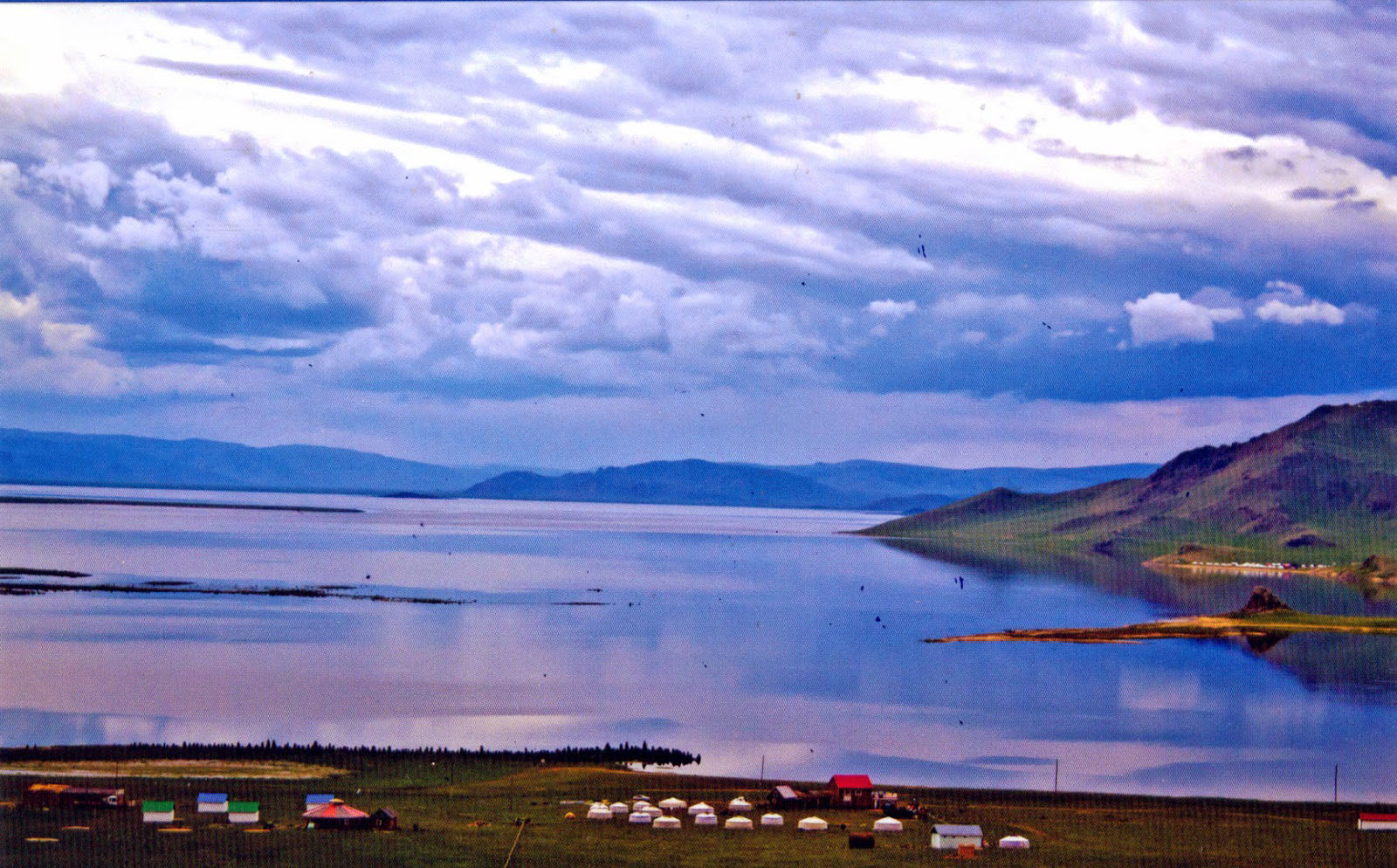 We have to cross several mountain ranges on sometimes difficult tracks before joining Lake Terkhiin Tsagaan Nuur where we spend 2 nights in a yurt camp.
We have to cross several mountain ranges on sometimes difficult tracks before joining Lake Terkhiin Tsagaan Nuur where we spend 2 nights in a yurt camp.
Picnic lunch en route.
Terkhiin Tsagaan Nuur Lake, also called “White Lake”, is nestled in the mountains of Khangai to 2,060 m. It measures 16 km wide and 20 km long, and its waters are of exceptional purity.
It is the heart of a protected area for its biodiversity, as diverse ecosystems cohabit: taiga (boreal forest), mountain steppe and wetlands supporting a rich fauna.
East of Terkhiin Tsagaan Nuur Lake is the extinct crater of the Khorgo volcano, which is responsible for the birth of the lake as the lava blocked the flow of a river, creating a natural dam.
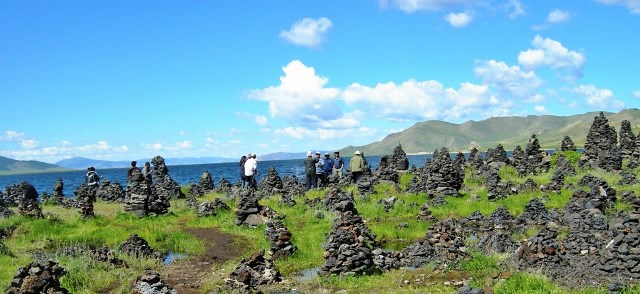 The Khorgo volcano is located at an altitude of 2200 meters, its slopes are covered with basalt and its crater forms an almost perfect cone of 200 meters in diameter and 100 meters deep.
The Khorgo volcano is located at an altitude of 2200 meters, its slopes are covered with basalt and its crater forms an almost perfect cone of 200 meters in diameter and 100 meters deep.
Its last eruption was 8000 years ago, it was the last active volcano in Mongolia.
Dinner and overnight in our tents in the wilderness.
Day – 10: Lake Terkhiin Tsagaan Nuur to Tsenkher Hot Springs (190 km – 3 to 4 hours drive)
Back on the roads southward through the mountains and forests of the Khangai.
At Tsetserleg, capital of the Arkhangai Province , we visit the Buyandelgeruulekh Khiid Monastery Museum.
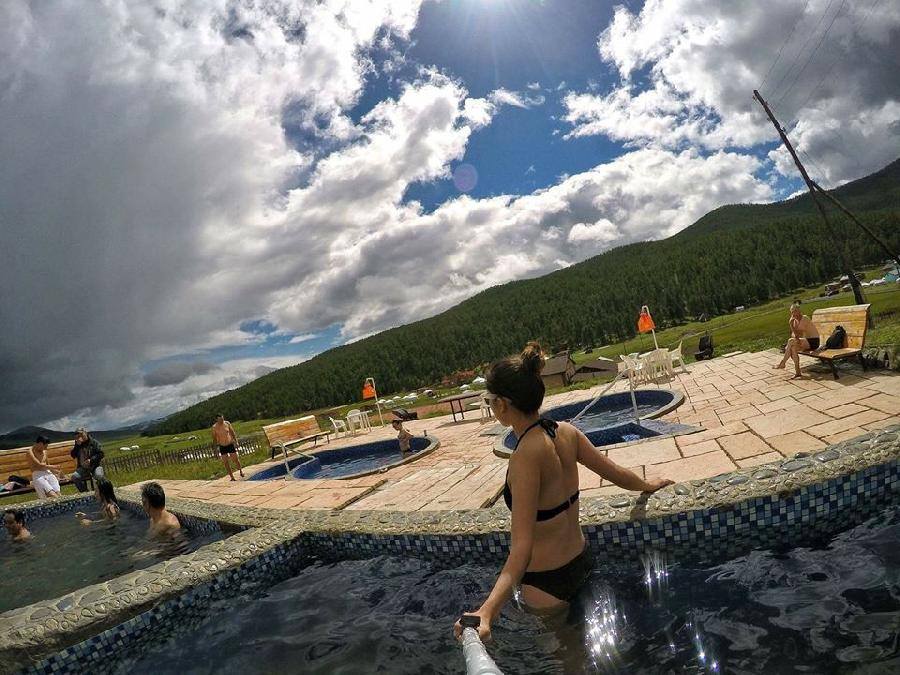 Buyandelgeruulekh Khiid is one of the Buddhist temples in Mongolia that has survived the destructions of the communist era.
Buyandelgeruulekh Khiid is one of the Buddhist temples in Mongolia that has survived the destructions of the communist era.
It is located in Tsetserleg, the provincial capital of Arkhangai at an altitude of 1691 m. It was founded in 1586 and enlarged in 1679 by the first Khalkh Zaya Pandita.
Guden, the main temple, was turned into a museum.
Off to Tsetserleg Market.
Picnic lunch en route.
Arrival in the afternoon to the Tsenkher hot springs.
Located in a green valley with forested slopes, Tsenkher hot springs are deemed for centuries among the nomads for their healing qualities.
Today, these 86 ° C waters flow into several thermal pools located in yurt camps.
Relaxing in the thermal baths will erase the rigours of the journey, especially if you opt for massages (not included).
Dinner and overnight at the yurt camp (2 to 4 persons per yurt, with single beds, showers in a separate building).
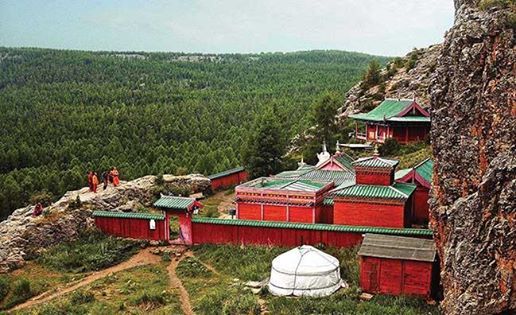 Day – 11: Tsenkher Hot Springs to Tuvkhen Monastery (150 km – 2 to 4 hours drive)
Day – 11: Tsenkher Hot Springs to Tuvkhen Monastery (150 km – 2 to 4 hours drive)
Breakfast and departure to the mountains above the Orkhon Valley, to the Tovkhon monastery.
The Tovkhon monastery towers the Orkhon Valley, at an altitude of 2400 m.
It includes several small temples, the oldest of which was built in 1654 for Zanabazar, who was the first spiritual leader of Buddhists in the line of Gelugpas in Mongolia.
Zanabazar brought a new start to the region on issues related to spirituality, including theology, language, art, medicine and astronomy. He composed sacred music, mastered the art of bronze and painting, and invented Soyombo writing in 1686.
You have to hike to access the monastery, about one hour climbing through a beautiful mountain forest. You can visit the temples and caves which are related to beliefs, like that of a spiritual rebirth after a stint in a very narrow pipe carved in the rock.
The view from the top extends over tens of kilometers beyond the mountain ranges surrounding the Orkhon Valley in long undulating waves, sometimes covered with dark forests, sometimes lined with lush green meadows.
We are progressing slowly on tracks surrounded by the famous landscape of the Orkhon Valley.
Classified in 2004 as World Heritage by UNESCO as the cradle of nomadic Mongolia, the “cultural landscape of the Orkhon Valley”, about 121 967 hectares, covers an extensive area of pastureland that stretches approximately 80km from long and 15 km wide on both banks of the Orkhon river.
The site also includes Karakorum.
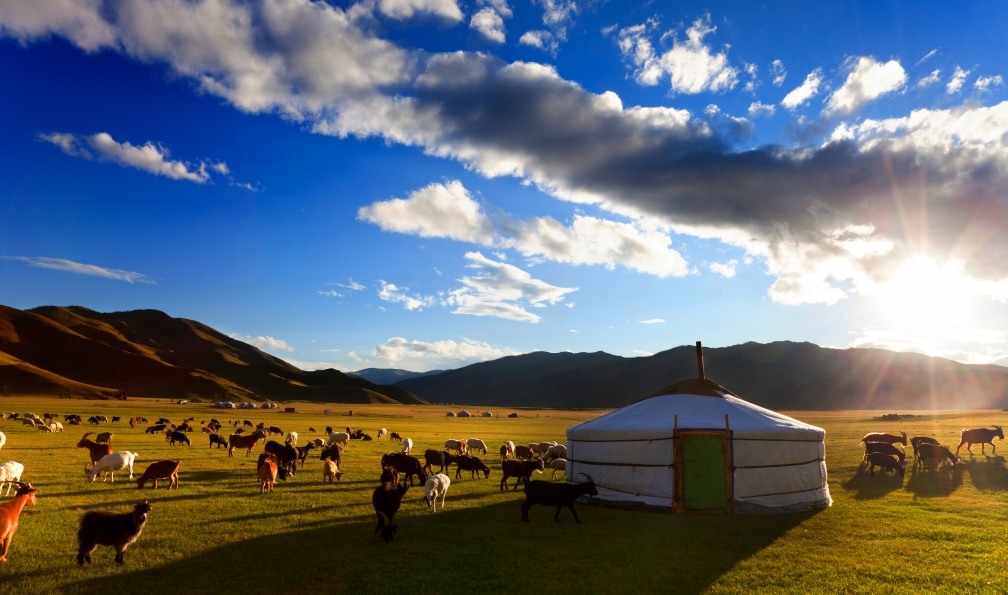 Grasslands are still used today by Mongolian nomadic herders, and many families keep perpetuating the traditional way of life. In the valleys and around the rivers are nestled yurts that house the nomadic families. In the wild, herds of horses, yaks, sheep and goats are moving in these protected areas.
Grasslands are still used today by Mongolian nomadic herders, and many families keep perpetuating the traditional way of life. In the valleys and around the rivers are nestled yurts that house the nomadic families. In the wild, herds of horses, yaks, sheep and goats are moving in these protected areas.
Late afternoon we arrive at the yurts of the nomadic family.
Dinner with our host family.
This night, we will sleep in a “guest-yurt” close to our nomad family’s yurts.
The comfort is more simple than in the yurt camps as there are no showers, but you will experience the real nomadic way of life…
Day – 12: Orkhon Valley (Tuvkhen Monastery) to Khyatruun (120 km – 3 to 4 hours drive)
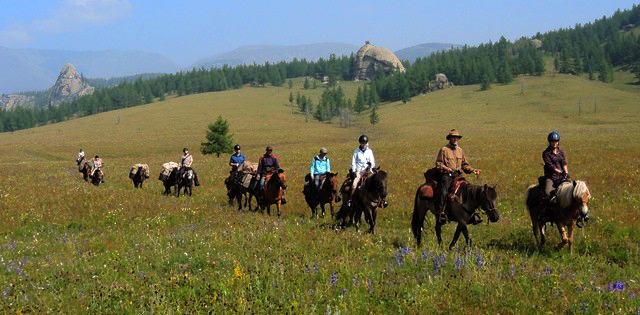 Breakfast. The day is devoted to the discovery of the traditional lifestyle of the nomads of Mongolia.
Breakfast. The day is devoted to the discovery of the traditional lifestyle of the nomads of Mongolia.
Each yurt camp is home to a family whose daily lives are punctuated by the care of herds: milking mares, sheep, goats and dris (female yaks), caring for sick or debilitated animals, moving animals to new pastures…
Women also take care of children, they cook, prepare different milk products (butter, cheese, fermented mare’s milk, drinking milk …) and maintain the interior of the yurt.
The men look after animals, maintenance of hardware and harness horses. They also cut wood for cooking.
We can participate in these activities, and become acquainted with the various family members.
During the day, we can easily reach the famous Orkhon Falls, hiking or on horseback.
The Orkhon Falls are actually the Ulaan Tsutgalan River Falls. The river falls into a spectacular canyon formed after an earthquake and a volcanic eruption more than 20 000 years ago, forming a cascade of 20 meters high and 10 meters wide.
The site is enchanted by the contrast between the whiteness of the foam and the black rock that forms the canyon walls. Going down along the walls to the foot of the fall, you will discover trees and flowers (wild peonies) that take advantage of the abundance of water to grow.
In the evening, our hosts will prepare a traditional specialty, the Khorkhog, the “Mongolian barbecue”.
The Khorkhog is a traditional nomadic specialty of the Mongolian steppe. You will almost never find it in a restaurant.
To prepare the Khorkhog, nomads cut mutton or goat into pieces, keeping the bones. Twenty stones the size of a fist are heated in the fire.
When hot enough, they are placed in layers with the meat in a metal container, which is often a milk can.
Other ingredients are added over the stones and meat, potatoes, carrots, cabbage, seasoning …
Water is added in sufficient quantity for all of the ingredients to be cooked both by the steam and the heat of stones. The container is closed and placed on the fire for an hour to an hour and a half.
At the opening of the container, the Khorkhog is ready to eat.
The family takes out the meat and vegetables, and the stones which turned black, both because of the fire and the fat that they have absorbed.
These stones are still warm and the guests keep them in their hands because Mongols consider them as beneficial to health.
We usually eat the Khorkhog with fingers, with the help of a knife to cut the meat.
Dinner and overnight at the nomad family

Day – 13 Khyatruun to Kharkhorin (is the ancient capital of the Mongol Empire) (150 km – 3 to 4 hours drive)
After breakfast, it is time to say goodbye to our nomad friends, the end of a wonderful human experience, having shared moments of unparalleled freedom.
We must resume our journey to new Mongolian horizons…
We drive towards Kharkhorin (Karakorum) through the Orkhon Valley.
Picnic lunch en route.
Visit of Erdene Zuu monastery.
Karakorum (Kharkhoryn) is the ancient capital of the Mongol Empire, founded in 1235 by Ogödei, the son of Genghis Khan.
In 1260, Kublai Khan transfers the capital to Beijing. Karakorum was destroyed in 1388 by troops of the Ming Dynasty. Of its former glory remain mere turtle statues guarding the entrances to the city walls.
In 1585, the Erdene Zuu has been built just outside the walls of the ruins of the ancient capital after the introduction of Buddhism in Mongolia as the state religion. Stones from the ruins of Karakorum were used in the construction.
It is surrounded by a wall with 108 stupas. 108 is a sacred number in Buddhism, and it is also the number of beads in a Buddhist rosary (mala).
The monastery was damaged in the 1680s, but was rebuilt in the eighteenth century and in 1872.
For centuries, Erdene Zuu was the most important religious shrine in Mongolia.
In 1939 the communist leader Horloogiyn Choybalsan destroyed the monastery, in a purge that resulted in the disappearance of hundreds of monasteries in Mongolia and killed over ten thousand monks.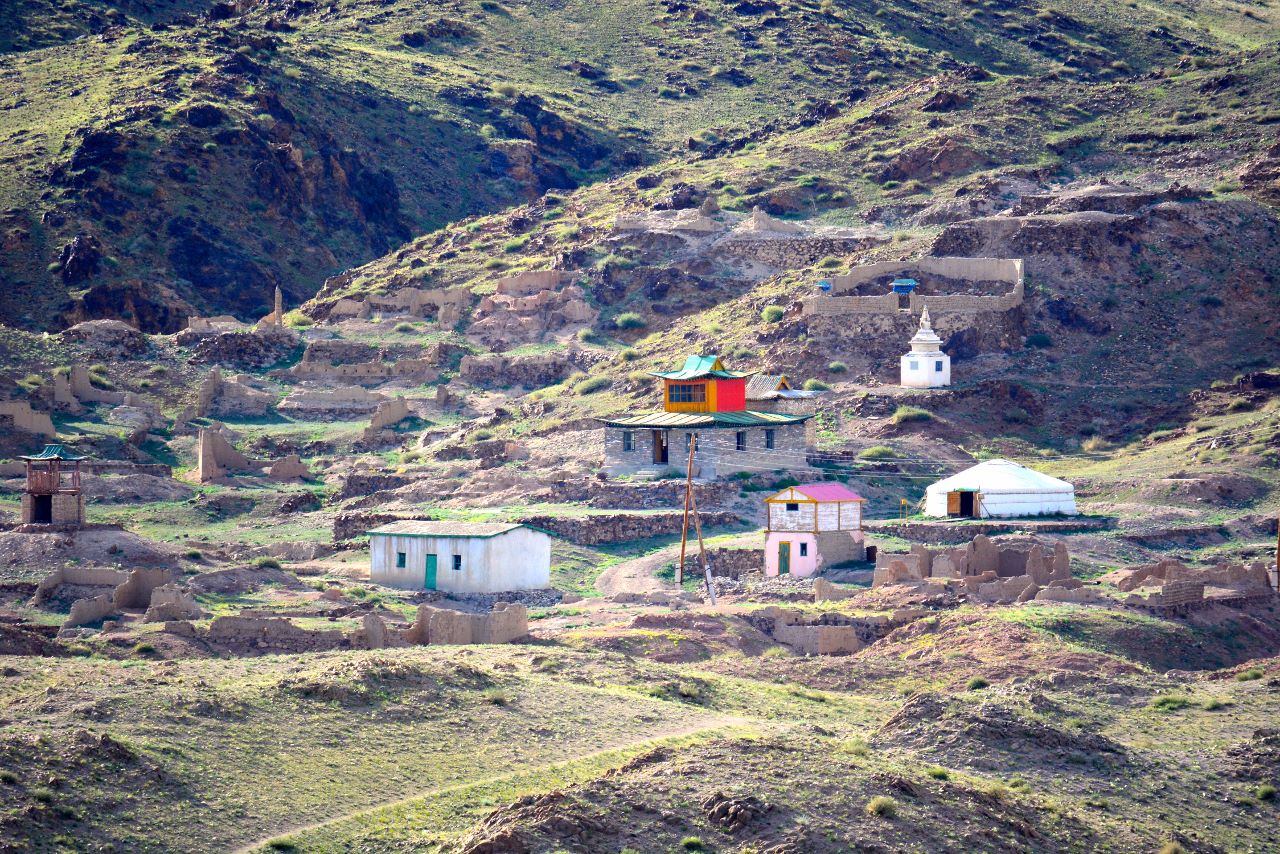
Three small temples and the outer wall with the stupas remained; the temples became museums in 1947.
After the fall of communism in Mongolia in 1990, the monastery was given to lamas and Erdene Zuu again became a place of worship.
The site was restored at the end of the century and regained part of its religious aspect. Today Erdene Zuu remains an active Buddhist monastery as well as a museum that is open to tourists.
We set up camp in a valley near Karakorum.
Dinner and overnight in tent.
Day – 14: Karakorum to Ongi Monastery (320 km – 5 to 6 hours drive)
After the breakfast, we continue our journey to the South and the Ongi Monastery.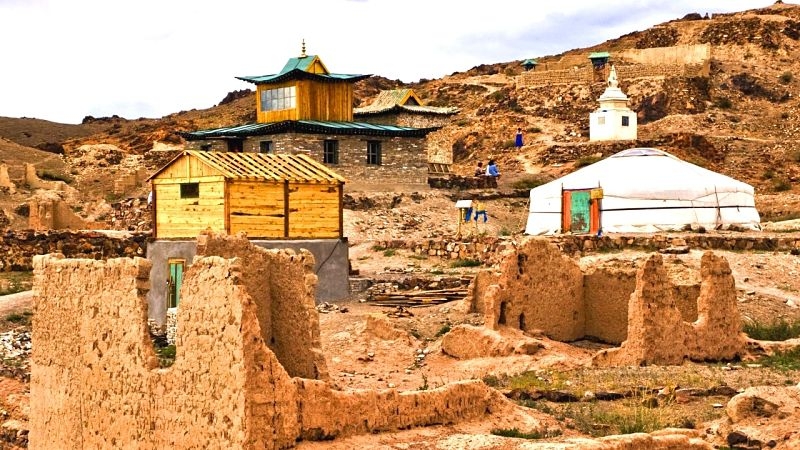
Picnic lunch en route.
Located in the province of Dundgovi (Central Gobi), the Ongi Monastery was one of the largest ones in Mongolia. Founded in 1660, it consisted of two complex spread over the northern and southern shores of the Ongi river.
In its heyday, it housed nearly 30 temples, four major Buddhist universities, and more than 1000 monks.
In the 30s, the Communist army destroyed the monastery, over 200 monks have been executed and most of the survivors were imprisoned or had to join special Forces of repression. Others, who managed to escape, became nomadic herders or workers.
In 1990, after the democratization of Mongolia, three monks returned to the monastery where they had received their religious education over 60 years ago.
A temple and a small museum have been rebuilt.
Visit of the monastery.
Dinner and overnight at the yurt camp (2 to 4 persons per yurt, with single beds, showers in a separate building).
Day – 15: Ongi Monastery to Bayanzag Flaming Cliffs (250 km – 4 to 6 hours drive)
Breakfast, and drive to the South and Bayanzag “Flaming Cliffs”.
Picnic lunch en route.
Bayanzag “Flaming Cliffs” are located in the province of Ömnögobi (“South Gobi”).
Their name means “rich in saxaul”, an endangered Central Asian tree 2 to 9 m high, whose roots are precious to protect soil from erosion.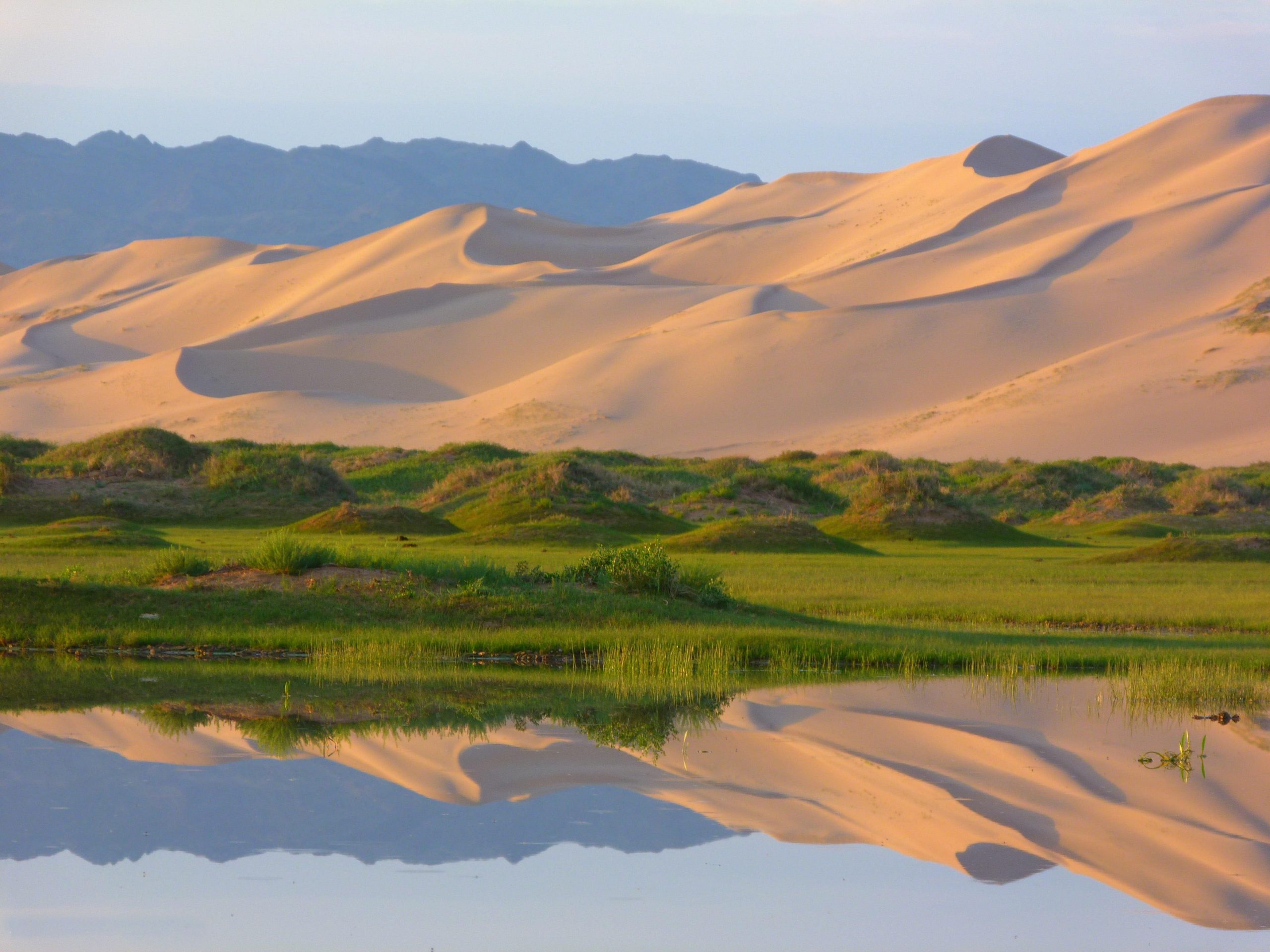
Significant paleontological discoveries have been made there, especially by American paleontologist Roy Chapman Andrews in 1920: fossilized dinosaur eggs and specimens of Velociraptor.
Their nickname of “Flaming Cliffs” is due to the orange-red rock the mountain is made of.
Hike the cliffs.
Dinner and overnight in tent.
Day – 16: Bayanzag Flaming Cliffs to Khongor Els Singing Dunes (160 km – 3 to 4 hours drive)
Breakfast and drive to the Khongoryn Els sand dunes.
Picnic lunch en route.
100 km long by 20 km wide, Khongoryn Els sand dunes are one of the most spectacular scenery of the Gobi Desert. 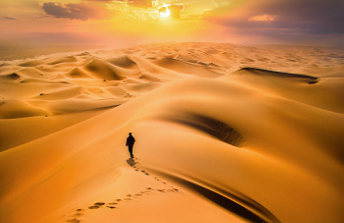 They can reach 200 meters high and the sounds they produce under the influence of wind gave them the nickname of “singing dunes”.
They can reach 200 meters high and the sounds they produce under the influence of wind gave them the nickname of “singing dunes”.
They are crossed by the Khongor river, which creates contrasting green oases in the middle of the desert sand.
Camel ride in Khongoryn Els dunes.
Arrival at the Khongoriin Els dunes yurt camp, for dinner and overnight (2 to 4 persons per yurt, with single beds, showers in a separate building).
Day – 17 Khongoryn Els “Singing dunes” to Valley of the Vultures (Yoliin Am) (180 km – 3 to 4 hours drive)
Route to the Yoliin Am canyon for a hike through the canyon.
Yoliin Am , whose name means “Valley of the Vultures” is a deep and narrow canyon in the Gurvan Saikhan Mountains, south of Mongolia.
It is located in the Gobi Gurvansaikhan National Park (“3 Beauties” in reference to three mountain ranges that make it up), in the heart of the Zuun Saikhanii Nuruu range (“Beauty of the East”).
This region, like the rest of the Gobi Desert, receives little rainfall, but the canyon is famous for its ice field which reaches several meters thick and several kilometers long at the end of winter.
In the past, the ice field remained throughout the year, but in recent years, it tends to disappear during summer.
Nearby, the Dungenee Canyon is particularly spectacular, being very narrow, sometimes hardly wider than a car.
Picnic lunch en route.
Dinner and overnight in tent.
Day – 18: Yoliin Am Canyon to Flight to Ulan Bator (560 km – 1.5 hour flight)
After breakfast we drive to Dalanzadgad airport for our return flight to Ulan Bator.
Lunch according to flight schedule.
On arrival, transfer to our 2* hotel in the city center.
This hotel is perfectly located 200 m from Peace Avenue between Sukhbaatar Square and the State Department Store, which gives you a large choice of restaurants and the opportunity of last minute shopping at the department store which remains open late.
Dinner downtown and night at the hotel.
Breakfast at the hotel.
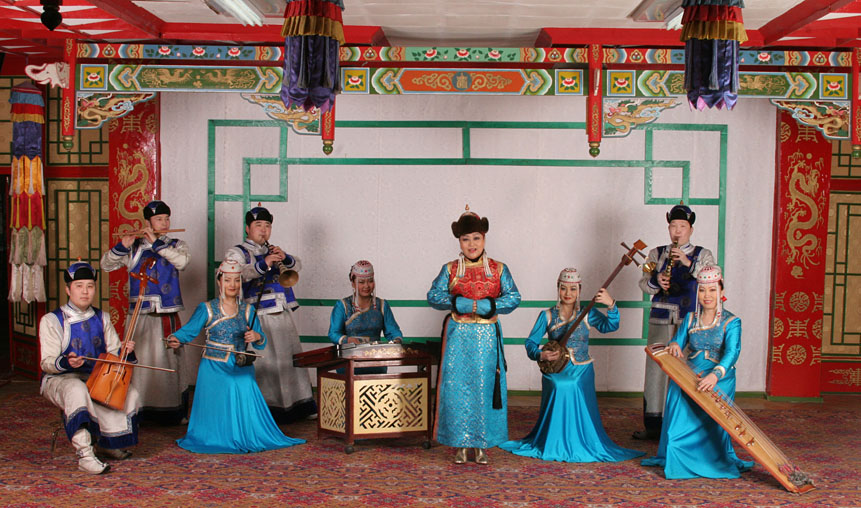 Visit of the Choijin Lama Temple and Museum, whose traditional architecture offers a surprising contrast with the Blue Skye glass tower.
Visit of the Choijin Lama Temple and Museum, whose traditional architecture offers a surprising contrast with the Blue Skye glass tower.
Visit the Bogd Jhan Winter Palace. The Bogd Khan had several palaces but the other ones have been destroyed by Russians.
Consisting of 6 traditionnal buildings, you will also see many objects that reflect the magnificence of court life at that time.
Lunch.
The rest of the afternoon is dedicated to shopping in stores downtown, where you will find traditional clothing and objects of daily life.
In the late afternoon, you will attend a show with traditional dances, music and songs from Mongolia, especially the amazing Khoomei.
The Khoomei is an overtone singing (throat singing) in which the singer produces two distinctively audible pitches at the same time, including a low pedal note, or drone, derived from the fundamental frequency of the vocal cord vibrations, and higher melodic notes that result when the singer’s mouth acts as a filter, selecting one note at a time from among the drone’s natural overtone series pitches.
The sound is reminiscent of the Jew’s harp.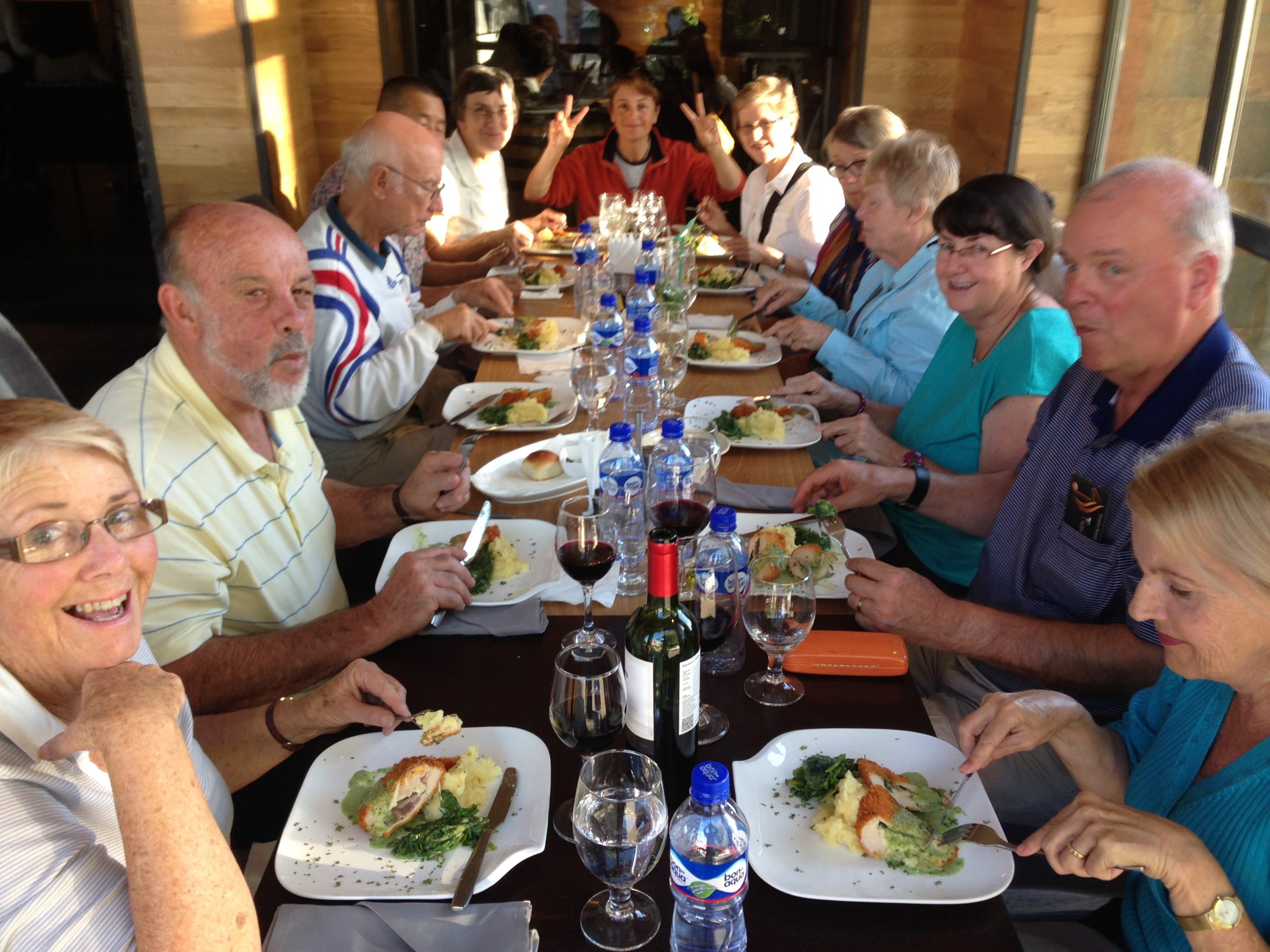
This type of song is recorded in Intangible Cultural Heritage of Humanity by UNESCO in 2010.
Dinner downtown and night at the 2* hotel.
Breakfast (depending on your flight schedule) and transfer to airport for your flight back home.
No lunch included as most flights depart in the morning.
INCLUDED
- Airport / hotel / airport transfers
- Flights Dalanzadgad / Ulan Bator
- 3 nights in a ** hotel in Ulaanbaatar, breakfast included
- Full board during the excursion
- Meal at Ulan Bator
- Mineral water
- 6 nights in a comfortable yurt camp with hot shower
- 2 nights homestay, in guest yurt
- 8 nights in a tent
- Travel in 4×4 or mini bus + driver
- Gasoline
- English speaking guide
- Cook for groups> 4 participants
- Horse riding
- Camel ride
- Local guides on hikes
- Entrance fees to the parks and museums mentioned
- Traditional show
- IRIDIUM satellite phone
- Kitchen equipment (mess tent, camping tables and chairs) and for sleeping (tent, sleeping bag, ground mattress), sanitary tent
NOT INCLUDED
- International transport
- Passport & Visa Fees
- Repatriation insurance
- Travel insurance
- Extra drinks / alcohols
- Phone calls
- Any excursion not mentioned in the program
- Baggage supplement if you are carrying more than 15Kg (hold and cabin baggage combined)
